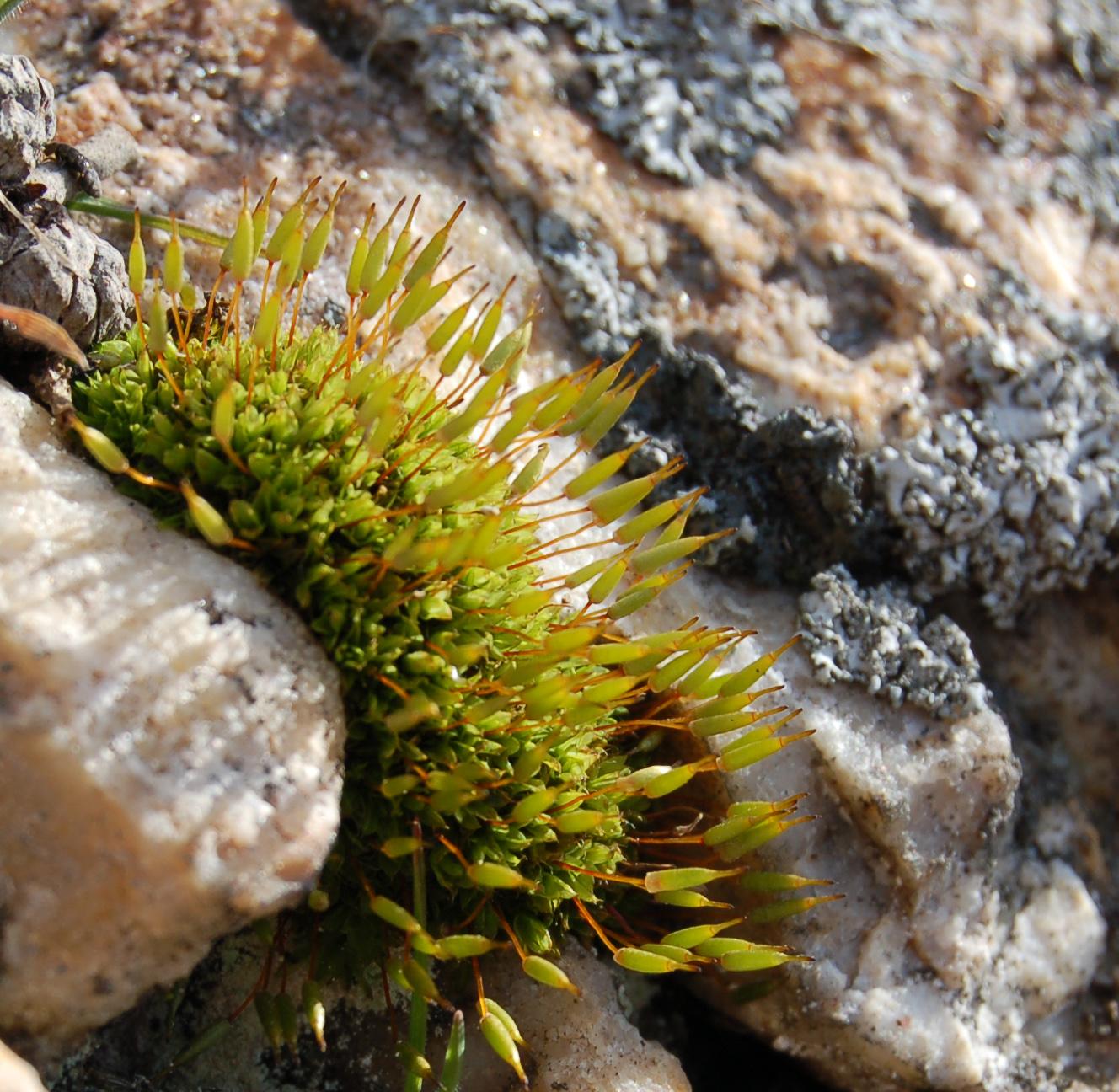Encalypta
|
Family: Encalyptaceae |
Plants small to medium sized, frequently gregarious. Stems irregularly branched, occasionally tomentose; central strand absent or weakly differentiated. Leaves oblong, elliptic, narrowly spathulate or occasionally lanceolate; apex broadly acute to rounded, mucronate to hair-pointed, occasionally cucullate; margins plane to weakly recurved on one or both sides, entire; costa single, subpercurrent to long-excurrent, awn smooth, hyaline; distal laminal cells more or less quadrate, papillose on one or both exposed surfaces with several large, branching or C-shaped papillae; marginal cells sometimes longer proximally, forming a very weak border; basal cells long-rectangular, thin-walled, generally smooth, cross walls frequently distinctly colored. Sexual condition autoicous. Seta elongate, smooth, brown to red or dark red. Capsule generally long-exserted or just emergent, erect to inclined, cylindric, smooth or distinctly furrowed; gymnostomous or peristomate, stomata few; peristome single, double or absent, exostome frequently reduced to small, irregular projections or teeth long, narrow, papillose; operculum usually conic-rostrate. Calyptra smooth or papillose distally or frequently only on rostrum, entire, fringed or lacerate below, fringe small or well developed. Spores generally large, ornamentation papillose to warty, or ridged. The large, straw-colored calyptrae of Encalypta are generally present in mature colonies, growing on shallow soil over rock in exposed or moderately sheltered recesses. Encalypta can be separated from the only other genus in the family, Bryobrittonia, by papillose distal leaf cells and more or less entire leaf margins. Encalypta microstoma Balsamo & De Notaris No specimens were seen; see D. G. Horton (1983).
|

